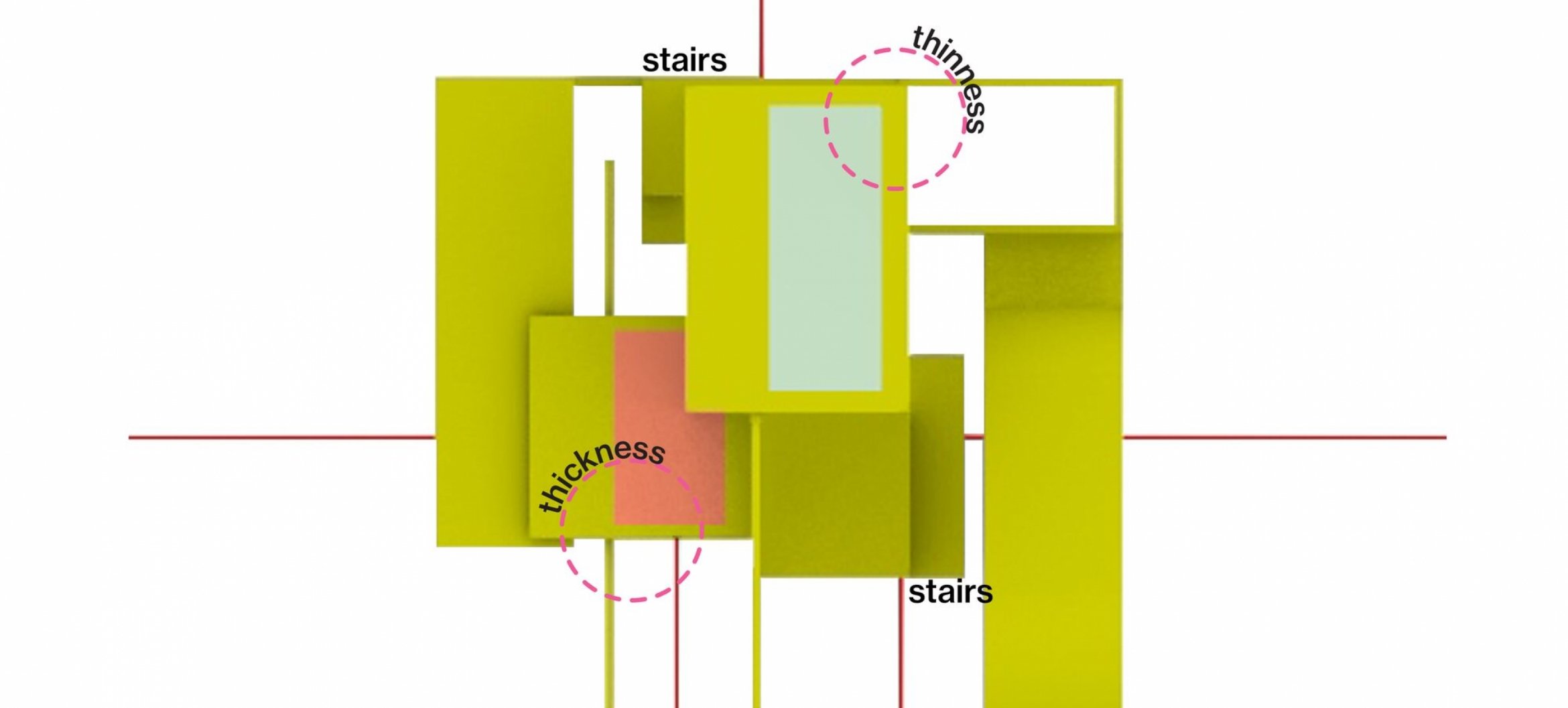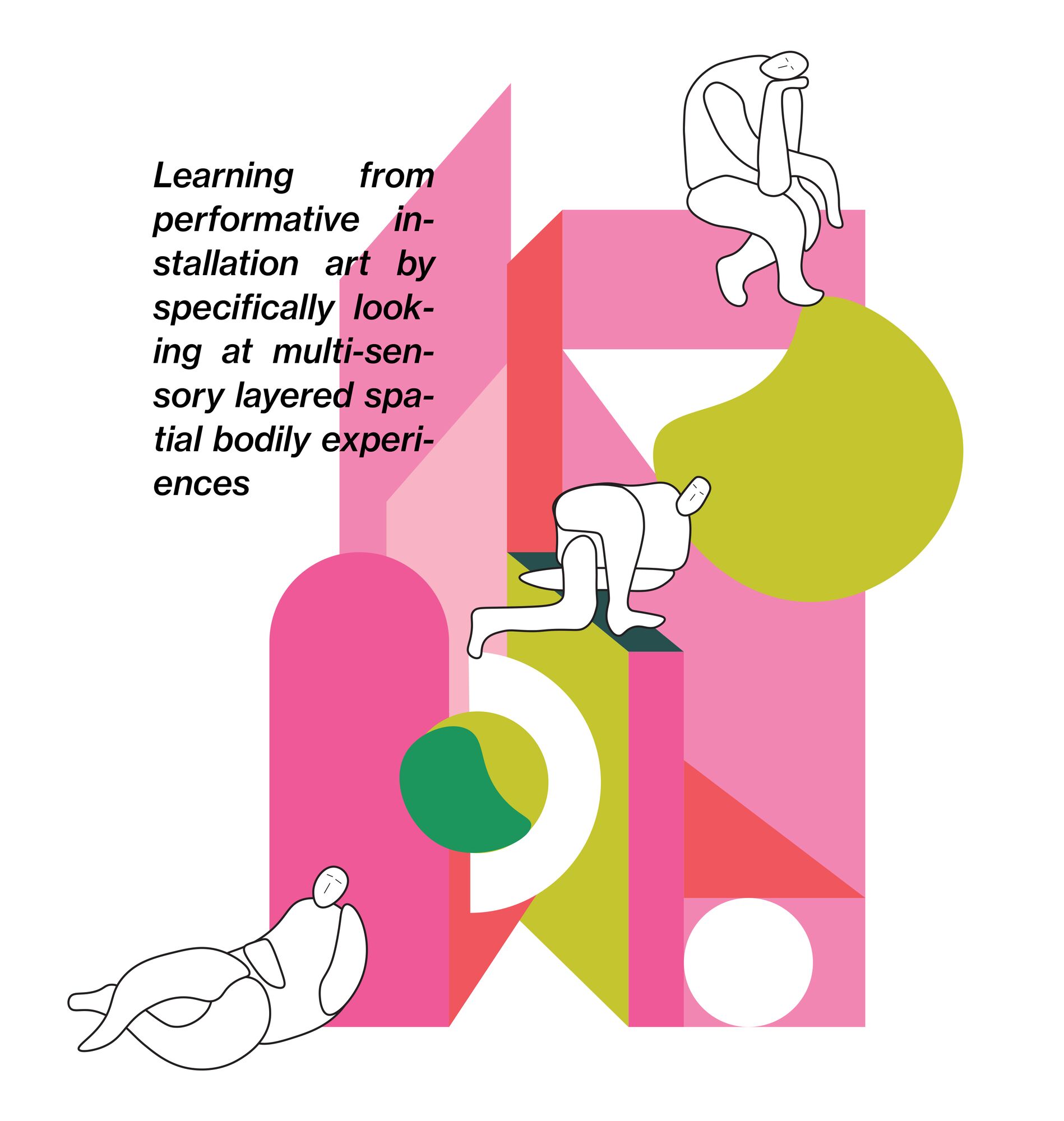Eylül Tombakoglu

Performative Loop
Interdisciplinary relations and their effects on architecture is non-negligible. Art and architecture have undulated relationship in the sense of responding diverse functionalities. That’s why analysing the extension of the term function in regard to architecture, increases the realization of the art on architectural experiences. The closeness between art and architecture can be discussed through multiple common grounds. The in between situation in terms of art and architecture’s relationship, generates the idea of a mediator.
Performative installation art stands as a mediator between art and architecture. That’s why learning from its multi-sensory layered spatial characteristics on bodily experiences is the main focus of this research.
Performative installation art’s characteristics that connects with architecture are being constantly in change, creating bodily experiences and fostering movement. These qualities open a new door into architecture because they are able to increase the awareness in people. To dig deeper into the topic, questioning how to make people aware of their movements by bringing the elements of performative installation art into architecture becomes the second dominant part of this research.
Architecturally, an entrance is a space which allows access from one place to another place. It creates a transition between spaces like a passage or gate. Most entrances do not take their users’ attention. People are usually focused on the place that they are transitioning into. People are not aware of their own movements or experience in an entrance. That’s why this research focuses on the experience analysis of an entrance. The entrance of the ArtEZ Building is analysed through its form, movement and material qualities. These analyses turned into a performative installation, an object which allows people to experience multiple spatial dualities and become aware of their own movements.
Goal/Ambition
This research aims to learn from performative installation art by specifically looking at multi-sensory layered spatial bodily experiences. The discussion of finding an in-between space for art and architecture is an essential point for this research. Art and architecture share a common ground when they relate themselves with bodily explorations and sensorial relations. Performative installation art’s characteristics stand as a medium between art and architecture because it focuses on what art and architecture share. Performative installation art is redefined by the writer of this research paper as a hybrid term. The combination of installation art which relates the body and the object by using spatial configuration and performance art which is an experimental art without having any strict definition creates the hybrid term which is performative installation art.
As being the writer of this research paper, I believe that it is very important for architecture to push its boundaries while being a multi-disciplinary discipline. As designers and architects, learning from performative installation art could bring opportunities and diversity to the architecture field. These opportunities could be defined as an awareness creator for architects. Performative installation art predominates with its multi-sensory and bodily explorative characteristics. If architects become aware enough to really put these characteristics into practice, then they will be able to enrich the architecture.

Deze pagina is voor het laatst gewijzigd op 24 juni 2022
Sta jij op deze pagina? En heb je een opmerking? Mail naar de redactie.